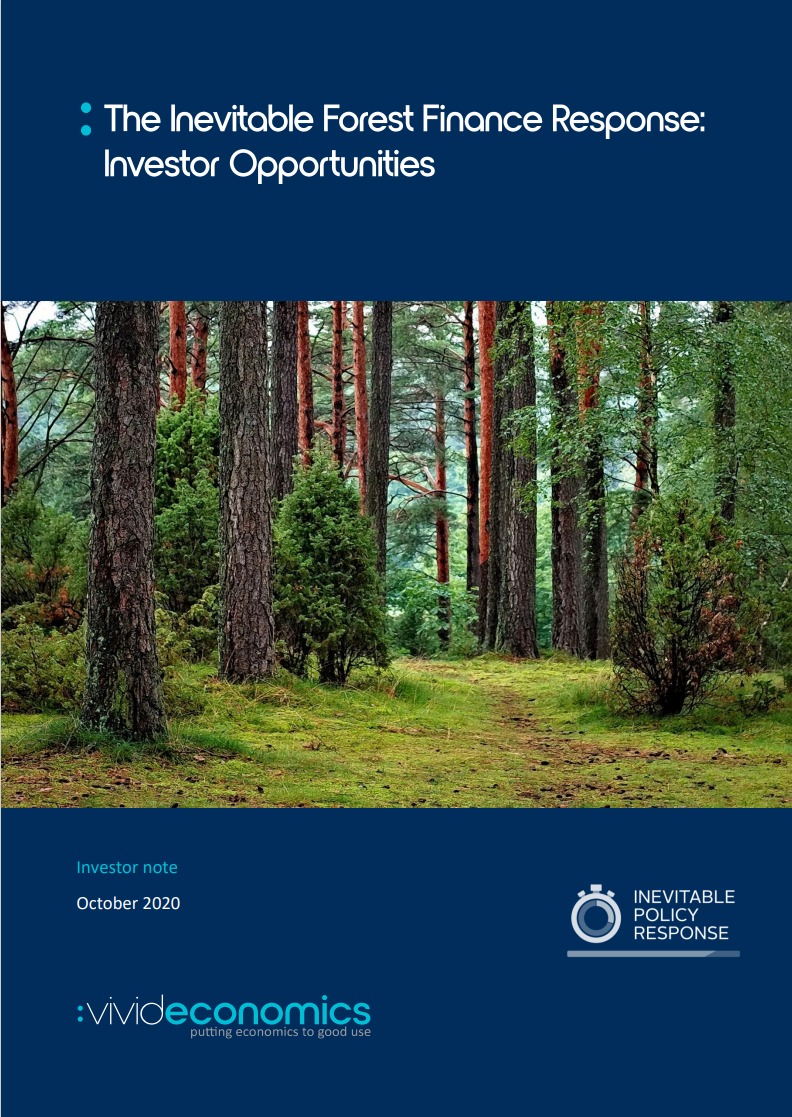
Climate policy will inevitably reverse historic losses in forest cover given the affordability and broader attractiveness of land-based emissions reductions. Net-zero target announcements will accelerate over the coming five years. These policies will rely heavily on ending deforestation and shifting to forest restoration as one of the world’s only massively scalable options for negative emissions. The Inevitable Policy Response (IPR), which models these expected policy developments in a Forecast Policy Scenario (FPS), results in a cessation of net forest cover loss by 2030, and a total of 350 Mha of afforestation and reforestation globally by 2050 (PRI, 2019). Such policies involve large scale development projects that sequester carbon by expanding and restoring carbon-dense natural ecosystems including forests, collectively known as Nature Based Solutions (NBS). Delivering NBS at scale will involve historic mobilization of capital alongside a massive increase in NBS project development capacity around the world, but especially in tropical ecosystems where forest loss has been most prevalent. The total NBS market value potential is estimated to be US$ trillions, when measured as the net present value of discounted profits generated between now and 2070. This opens up enormous new opportunities for both project developers and investors. Forest-related Nature-Based Solutions (NBS) could generate US$800 billion in annual revenues by 2050, worth US$1.2 trillion today in NPV terms, 1 surpassing the current market capitalisation of the oil & gas majors.2 Natural forest restoration, as a low-cost mitigation strategy with a more direct compensation model, is expected to be taken up first and generates most of the early benefits. Avoided deforestation could represents an additional large scale investor opportunity, but is further away from at-scale commercialisation since relevant low-emissions agriculture projects require more complex compensation mechanisms. Both could form part of green bond offerings of interest to the private sector as companies and countries seek ways to raise funds for mitigation projects. Forest finance, historically dominated by public sector support, will increasingly be delivered by the private sector. Recent innovations in green finance make private sector participation in the forest sector possible, while the sheer scale of forest recovery required make that participation necessary. Moreover, by the end of the decade, the fuller and wider incorporation of land-based carbon sequestration in carbon offset markets will provide a more reliable long-term market structure for private actors. Investors seeking to position themselves to capitalise on this opportunity must act now. By cultivating and originating early NBS opportunities that are already becoming mainstream, and by engaging policy makers on optimal enabling regulations, forward-looking investors can drive this market and its impact. Doing so will also help investors get exposure to the upside opportunities associated with net-zero transitions
